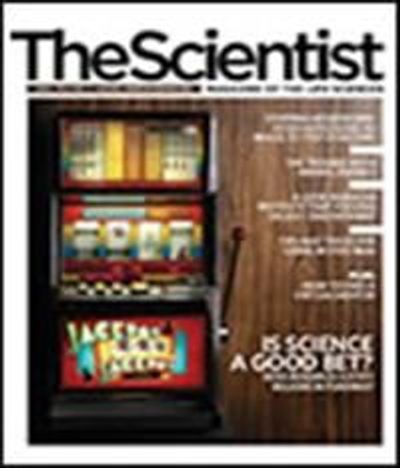Double research funding? Be careful
The dramatic increase in NIH's budget has actually hurt scientists. Could NSF make the same mistake?
On the surface, doubling research funding would seem to be a good thing. Advocates cheered the doubling of the National Institutes of Health budget between 1998 and 2003, with increases of almost 15% per year. I count myself among those who strongly support increases in funding for science, but it's become clear that the dramatic surge in NIH's budget has hurt, not helped, US life scientists.
Here's why: As the NIH budget doubled, the natural response was to train more scientists, expand existing labs, and build new ones. In the meantime, in 2003, as we all know, everything changed. The breakneck increase in funding came to a screeching halt, and inflation has caused the effective budget to fall every year...
It's become clear that the way the increase was implemented has significantly reduced the effectiveness of the research enterprise, and hence the rate of return, on this large investment. If we're not careful, Congress may be poised to make the same mistake with the National Science Foundation, if plans to double its budget become more aggressive.
| "It's become clear that the way the increase was implemented has significantly reduced the effectiveness of the research enterprise, and hence the rate of return, on this large investment." -Adam Jaffe |
This more competitive and uncertain funding environment doesn't just reduce the resources available to particular labs; it also causes significant waste. With funding so uncertain, investigators are reluctant to add staff even if they currently have the money to pay them, making it difficult to maintain a research trajectory. Moreover, investigators faced with such low odds of getting funded spend more time writing grant proposals than doing research; now, it is not uncommon for an investigator to submit five or more time-consuming proposals each year.
For those labs that do lose funding, they also lose the time invested in training new lab personnel that must be let go. Indeed, even labs that don't actually lose funding may suffer losses of this sort, when the investigator cuts staffing to conserve funds against the risk of losing funding. In sum, the overall increase in funding has not led to a proportional increase in scientific output.
We could have avoided this. Instead of doubling and then freezing the budget, we should have stretched out the increase over a period longer than five years. For instance, we ought to have increased the growth rate by a percentage point or two over the rate of increase from the early 1990s, and then sustained that higher rate over decades, instead of hitting the brakes. To minimize the ongoing damage from the dramatic doubling, we must quickly instate modest, steady, real increases in NIH spending - something along the lines of four percent per year for each of the next five years. A steady increase would stabilize the grants process and enable researchers to stop panicking about their funding prospects, so they can get back to doing research instead of writing grant proposals nonstop.
Have we learned from our mistakes? In his 2006 State of the Union address, President Bush proposed to double the NSF budget over 10 years. I strongly support increasing NSF funding, and doubling over 10 years is certainly less drastic than the same increase over five years. The president's plan would increase NSF appropriations at about eight percent per year (a $439 million increase for FY08, compared to a proposed $232 million increase for NIH). That's only a modest acceleration over the roughly six percent per year increases that NSF has seen in recent years (putting aside the two virtually no-growth years of 2005 and 2006).
The president's plan is a reasonable response to the concerns and opportunities highlighted in the recent National Academy of Sciences (NAS) report, "Rising Above the Gathering Storm," which emphasized the need to strengthen funding of physical sciences, math, and engineering to maintain and enhance US competitiveness. So maybe we can have the best of both worlds: The politicians can tout their dramatic plan to double the budget (albeit in 10 years instead of five), while what we actually implement is a useful, modest acceleration in spending that won't yank the system out of equilibrium.
We just need to hope that in 2018 we don't declare victory, then bring everything to a screeching halt.
Adam B. Jaffe is the Fred C. Hecht Professor in Economics and Dean of Arts and Sciences at Brandeis University. He is the coauthor of Patents, Citations and Innovations (MIT Press) and Innovation and Its Discontents (Princeton University Press).
Interested in reading more?
